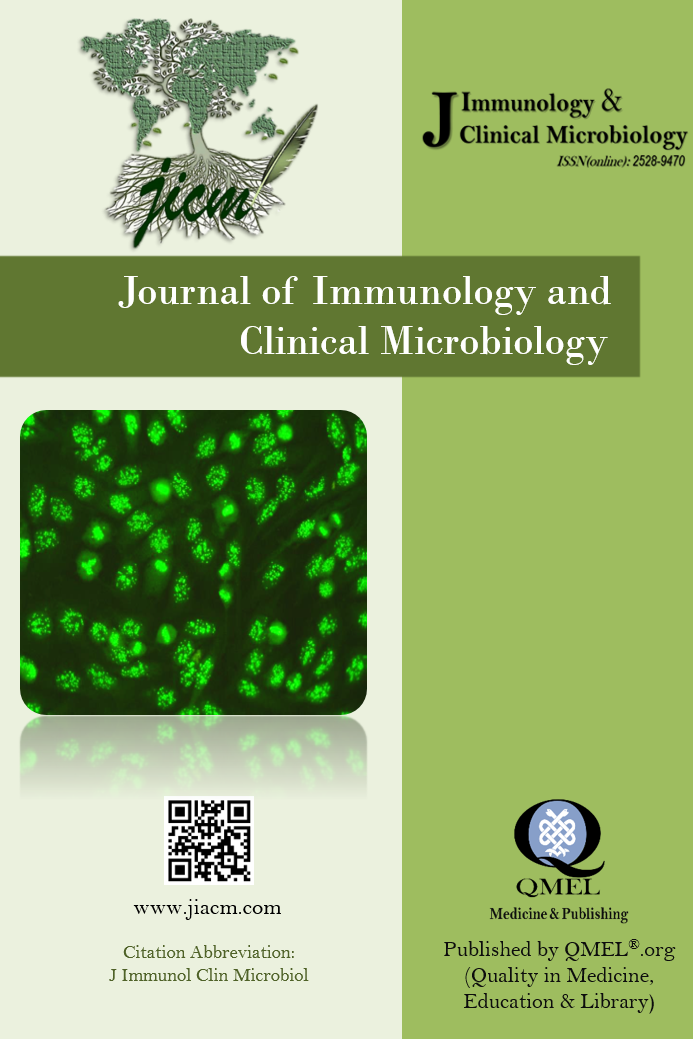Maggot Debridement Therapy and Its Important Components: Antimicrobial Agent Chymotrypsin and It's Protein Structure
Maggot Debridement Therapy and Its Important Components: Antimicrobial Agent Chymotrypsin and It's Protein Structure
MDT, Lucilia sericata, Biofilm, chymotrypsin, antibiotic resistance,
___
- 1. Bonn D. Maggot therapy: an alternative for wound infection. Lancet. 2000;356(9236):1174.
- 2. Sherman RA, Hall MJ, Thomas S. Medicinal maggots: an ancient remedy for some contemporary afflictions. Annu Rev Entomol. 2000;45:55-81.
- 3. Tanyuksel M, Araz E, Dundar K, Uzun G, Gumus T, Alten B, et al. Maggot debridement therapy in the treatment of chronic wounds in a military hospital setup in Turkey. Dermatology. 2005;210(2):115-8.
- 4. Ramundo J, Gray M. Enzymatic wound debridement. J Wound Ostomy Continence Nurs. 2008;35(3):273-80.
- 5. Chambers L, Woodrow S, Brown AP, Harris PD, Phillips D, Hall M, et al. Degradation of extracellular matrix components by defined proteinases from the greenbottle larva Lucilia sericata used for the clinical debridement of non-healing wounds. Br J Dermatol. 2003;148(1):14-23.
- 6. McEvoy GK. Dose adjustment in renal impairment: response from AHFS Drug Information. BMJ. 2005;331(7511):293.
- 7. Horobin AJ, Shakesheff KM, Woodrow S, Robinson C, Pritchard DI. Maggots and wound healing: an investigation of the effects of secretions from Lucilia sericata larvae upon interactions between human dermal fibroblasts and extracellular matrix components. Br J Dermatol. 2003;148(5):923-33.
- 8. Mumcuoglu KY, Davidson E, Avidan A, Gilead L. Pain related to maggot debridement therapy. J Wound Care. 2012;21(8):400, 2, 4-5.
- 9. Sherman RA, Mumcuoğlu KY, Grassberger M, Tantawi TI. Biotherapy History Principles and Practice. Springer Sciens Business Media Dordrecht, 2013:5-30.
- 10. Telford G, Brown AP, Seabra RA, Horobin AJ, Rich A, English JS, et al. Degradation of eschar from venous leg ulcers using a recombinant chymotrypsin from Lucilia sericata. Br J Dermatol. 2010;163(3):523-31.
- 11. Yazar S, Kuk S, Miman Ö, Saygı G. Saygı'nın Temel Tıbbi Parazitoloji'si, Ocak 2016, 1. Baskı. Erciyes Üniversitesi Yayınları, Kayseri, Türkiye.
- 12. Huberman L, Gollop N, Mumcuoglu KY, Block C, Galun R. Antibacterial properties of whole body extracts and haemolymph of Lucilia sericata maggots. J Wound Care. 2007;16(3):123-7.
- 13. Huberman L, Gollop N, Mumcuoglu KY, Breuer E, Bhusare SR, Shai Y, et al. Antibacterial substances of low molecular weight isolated from the blowfly, Lucilia sericata. Med Vet Entomol. 2007;21(2):127-31.
- 14. Van der Plas MJ, Jukema GN, Wai SW, Dogterom-Ballering HC, Lagendijk EL, van Gulpen C, et al. Maggot excretions/secretions are differentially effective against biofilms of Staphylococcus aureus and Pseudomonas aeruginosa. J Antimicrob Chemother. 2008;61(1):117-22.
- 15. Cucarella C, Solano C, Valle J, Amorena B, Lasa I, Penades JR. Bap, a Staphylococcus aureus surface protein involved in biofilm formation. J Bacteriol. 2001;183(9):2888-96.
- 16. Singhal A, Reis ED, Kerstein MD. Options for nonsurgical debridement of necrotic wounds. Adv Skin Wound Care. 2001;14(2):96-100.
- 17. Costerton JW, Stewart PS, Greenberg EP. Bacterial biofilms: a common cause of persistent infections. Science. 1999;284(5418):1318-22.
- 18. Cazander G, van de Veerdonk MC, Vandenbroucke-Grauls CM, Schreurs MW, Jukema GN. Maggot excretions inhibit biofilm formation on biomaterials. Clin Orthop Relat Res. 2010;468(10):2789-96.
- 19. Drisdelle R. Maggot debridement therapy: a living cure. Nursing. 2003;33(6):17.
- 20. Baer WS. The treatment of osteomyelitis with the maggot (larva of the blowfl y). J Bone Joint Surg. 1931;13:438–475.
- 21. Robinson W. Stimulation of healing in non-healing wounds: by allantoin occurring inmaggot secretions and of wide biological distribution. J Bone Joint Surg Am.1935b;17:267–71.
- 22. Wollina U, Liebold K, Schmidt WD, Hartmann M, Fassler D. Biosurgery supports granulation and debridement in chronic wounds--clinical data and remittance spectroscopy measurement. Int J Dermatol. 2002;41(10):635-9.
- 23. Horobin AJ, Shakesheff KM, Woodrow S, Robinson C, Pritchard DI. Maggots and wound healing: an investigation of the effects of secretions from Lucilia sericata larvae upon interactions between human dermal fibroblasts and extracellular matrix components. Br J Dermatol. 2003;148(5):923-33.
- 24. Sherman RA. Maggot versus conservative debridement therapy for the treatment of pressure ulcers. Wound Repair Regen. 2002;10(4):208-14.
- 25. Wollina U, Karte K, Herold C, Looks A. Biosurgery in wound healing--the renaissance of maggot therapy. J Eur Acad Dermatol Venereol. 2000;14(4):285-9.
- 26. Steenvoorde P, Jacobi CE, Oskam J. Maggot debridement therapy: free-range or contained? An in-vivo study. Adv Skin Wound Care. 2005;18(8):430-5.
- 27. Jeffcoate WJ. Screening to identify individuals at high risk of developing diabetic foot ulcers. Nat Clin Pract Endocrinol Metab. 2008;4(5):256-7.
- 28. Gurlek A, Bayraktar M, Savas C, Gedik O. Amputation rate in 147 Turkish patients with diabetic foot: the Hacettepe University Hospital experience. Exp Clin Endocrinol Diabetes. 1998;106(5):404-9.
- 29. Yesil S, Akinci B, Yener S, Bayraktar F, Karabay O, Havitcioglu H, et al. Predictors of amputation in diabetics with foot ulcer: single center experience in a large Turkish cohort. Hormones (Athens). 2009;8(4):286-95.
- 30. Valachova I, Bohova J, Palosova Z, Takac P, Kozanek M, Majtan J. Expression of lucifensin in Lucilia sericata medicinal maggots in infected environments. Cell Tissue Res. 2013;353(1):165-71.
- Yayın Aralığı: Yılda 4 Sayı
- Başlangıç: 2016
- Yayıncı: Erkan YULA
Barsak Mikrobiyotasının Nörodejeneratif Hastalıklar Üzerindeki Patofizyolojik Rolü
Serkan SUGEÇTİ, Ender BÜYÜKGÜZEL, Kemal BÜYÜKGÜZEL
Gülseren YİLMAZ, Ziya SALİHOGLU
Biosafety principles in parasitology laboratories
Abdüssamed AKŞİT, Emrah ERDOĞAN, Serkan KARACA, Bora ÖZKAN, Ahmet GÜRGEL, Merve YÜRÜK, Eda SİVCAN, Bekir TARTICI, Yunus UYAR
Emrah ERDOĞAN, Abdüssamed AKŞİT, Ahmet GÜRGEL, Serkan KARACA, Bora ÖZKAN
